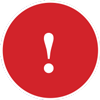How to use this guide
Read through this online guide using the navigation links at the bottom of each page.
Or, download a PDF below:
- Mastectomy surgery and axillary lymph node dissection
- Mastectomy surgery and sentinel lymph node biopsy
These resources are also available in more languages:
- Mastectomy and axillary lymph node dissection
- Mastectomy and sentinel node biopsy
The information in this guide will help prepare you for your mastectomy surgery and axillary lymph node dissection or sentinel lymph node biopsy. It also has information about what will happen on the day of surgery and your care after the operation.
Your surgeon and Sunnybrook nursing staff will go over this guide with you. We know this may be a stressful time for you and you will be given a lot of information about your medical condition. We hope this guide will help you keep track of what you need to do for your surgery.
If at any time you have questions, please ask a member of your care team.
Your medical records are accessible online through MyChart, a service available to Sunnybrook patients. In order to use MyChart you will need a password, which can be picked up at the Medical Records Desk on the second fl oor of the Odette Cancer Centre (Room T2-212). You can also get a password by completing the form on this webpage. The website address for MyChart is mychart.ca.
In your paper copy of this guide, there is a place to write the dates and times of all your appointments.
What is a mastectomy?
A mastectomy is a surgery that removes all of the breast tissue. Usually the nipple is removed as well. No muscles are removed. Lymph nodes from your armpit area can be removed at the same time.
» What is an axillary lymph node dissection?
Lymph nodes act as filters in the body’s circulatory system. Sometimes cancer cells leave the breast tumour and spread to other parts of the body. Some of these cells will be caught in the lymph nodes in the arm pit.
- As part of your mastectomy, the surgeon may remove all of the lymph nodes from the armpit area. This surgery is called an axillary lymph node dissection.
- If an axillary dissection is being done then you have had a biopsy (usually in the radiology department) to show that the cancer has spread to the lymph nodes.
- After the surgeon removes the lymph nodes, they will be sent to a lab for testing. This information helps the doctors decide what other treatments you will need.
» What is a sentinel lymph node biopsy?
Lymph nodes act as filters in the body’s circulatory system and sentinel lymph nodes are the lymph nodes closest to the tumour in the breast. As part of your mastectomy, the surgeon may remove one to three sentinel lymph nodes in the armpit on same side as the breast cancer.
Why are the sentinel lymph nodes removed?
- Sometimes cancer cells leave the breast tumour and spread to other parts of the body.
- Some of these cells will be caught in the lymph nodes in the arm pit.
- The surgeon needs to take out a few lymph nodes for testing.
- This information helps the doctors decide what other treatments you will need.
Breast cancer surgery education class
This class will help you learn about what to expect and how to manage your care after your breast cancer surgery.
- This class may be done virtually.
- If it is done in person, the class is held every Tuesday from 10:30 a.m. to 11:30 a.m. in the Breast Centre, M Wing, 6th Floor, Room 412 (M6 412).
- Your Surgeon's office will provide you with a date to attend the class. It will likely be scheduled on the same day as your Pre-anesthesia Assessment appointment.
- You will meet the team members involved in your after surgery care and be given the chance to ask questions.
- You will be shown how to manage your drain, a device used to collect fluid from the surgical incision (cut).
- You will be shown and practise the exercises that are important to do after surgery
 Important reminders
Important reminders
- Please bring a paper copy of this guide with you to your Pre-anesthesia Clinic appointment and on the day of your surgery.
- Please bring your Ontario Health Card and your Sunnybrook card on every visit to the hospital.
- If you do not read or speak English, please bring someone with you who can translate.






